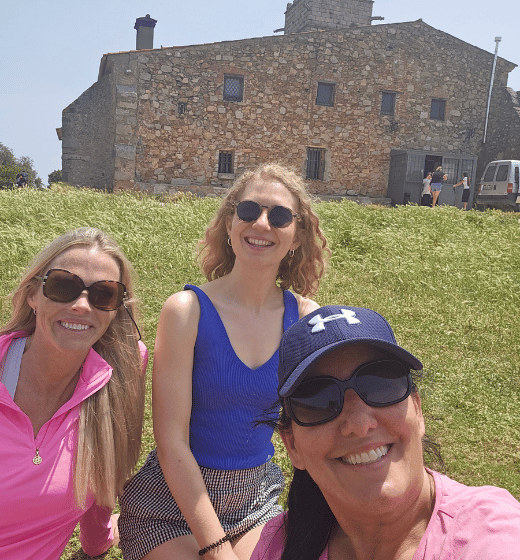

When you’re a physical therapist, words matter as much as hands. Imagine working with Spanish-speaking patients and not finding the right phrase, it feels like something is missing, right? That’s why business Spanish for physiotherapist work is so important. And not just in a classroom, but in real life, where medical Spanish becomes part of your rhythm: talking, listening, laughing and even making mistakes. Immersion makes the language stick because you live it. In this article, I’ll tell you the story of one of my students, Karen, who came to Barcelona from California to dive into Spanish and into life itself.
The benefits of learning business Spanish for physiotherapists through immersion include improved communication with patients, personalized instruction tailored to your needs, and enhanced professional success in diverse clinical settings. These benefits help you connect more effectively and confidently with Spanish-speaking clients.
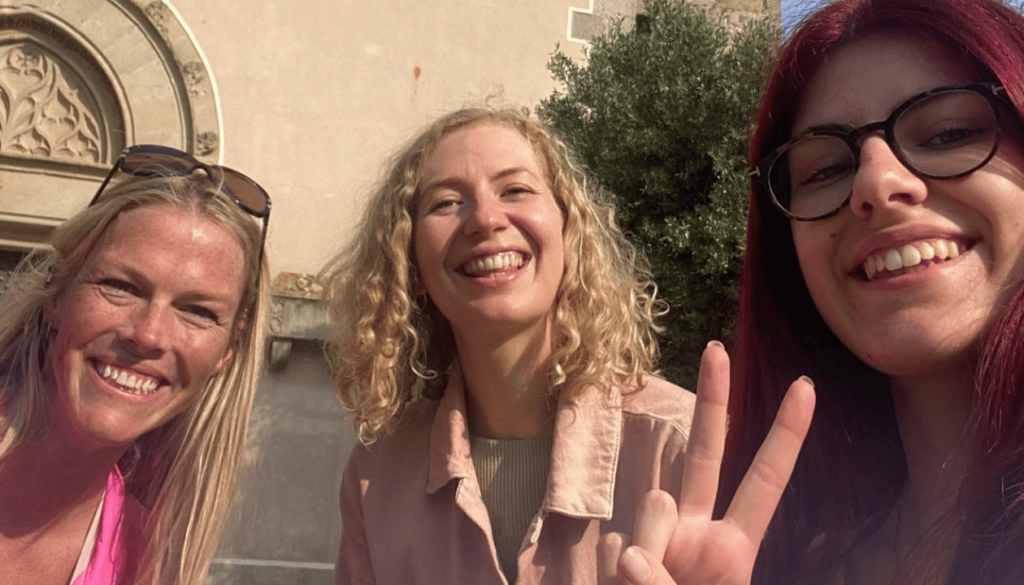
Introduction to Immersion Programs
Imagine stepping into a world where every conversation, every sign, and every interaction helps you learn Spanish not just in theory, but in practice. That’s the heart of a Spanish immersion program. These programs are designed to surround you with the Spanish language, making it a part of your daily life from the moment you wake up. For working professionals like physical therapists, this approach is a game-changer. Instead of memorizing vocabulary lists, you’re using business Spanish and medical Spanish in real conversations with Spanish-speaking patients, clients, and colleagues.
Immersion programs focus on building real language skills that you can use immediately, whether you’re explaining a treatment plan, greeting a new client, or navigating a busy market. By living and learning in a Spanish-speaking environment, you quickly gain the ability to communicate effectively, boost your comprehension and connect with the culture on a deeper level. For anyone interested in advancing their career, especially in fields where communication is key, these programs offer a direct path to fluency and confidence.
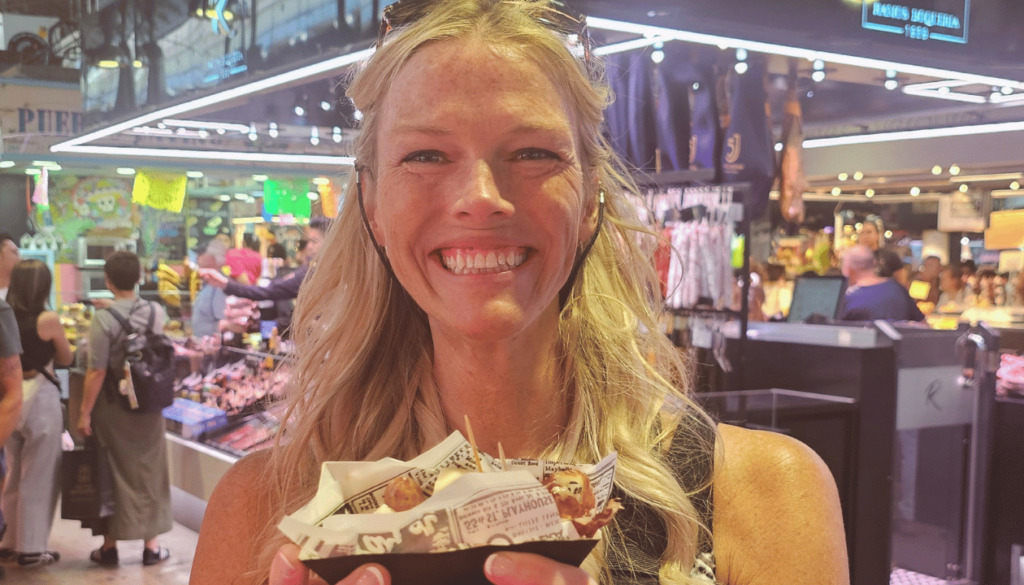
Meet Karen – A physiotherapist from California
Karen arrived in Dosrius, Barcelona, with a smile that could light up the room. A dedicated physiotherapist, she came seeking more than just grammar drills and verb conjugations—she wanted to live the Spanish language in everyday life.
When she shared her dream of reaching Spanish-speaking patients both in California and abroad, I knew this week would be something special. Her goal was clear: blend business Spanish with the warm human touch of medical Spanish. Not just for her career, but also for her future travels through Latin America, where she hopes to volunteer and connect deeply with local communities.

Karen was eager to develop strong Spanish skills for her work and travels, ensuring she could communicate effectively in professional and personal settings. To support her ambitions, the immersion experience was tailored to her specific needs as a physiotherapist, focusing on relevant vocabulary and real-life scenarios.
I joked, “This isn’t a Spanish language course in the typical sense—it’s a life course.” She laughed, nodded, and replied, “That’s exactly why I’m here. I don’t just want to learn Spanish in theory. I want to talk, share, and feel part of the rhythm of life.”
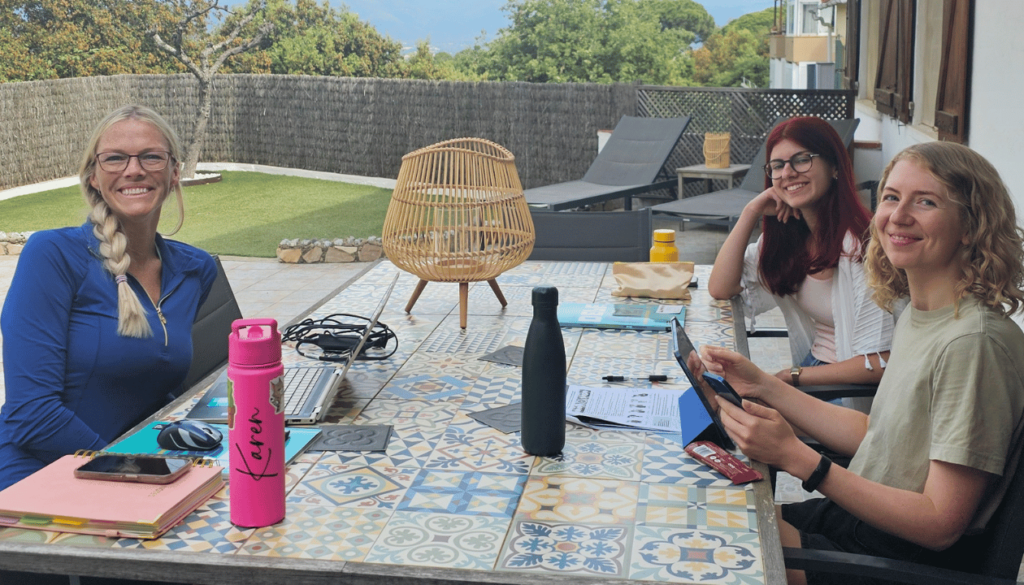
A Birthday to Remember in Barcelona
When Karen’s birthday arrived, we didn’t keep it quiet. No, no. We went straight to the heart of Barcelona, to the oldest restaurant in the city, Can Culleretes, where the walls themselves have heard more lessons than any classroom could hold.
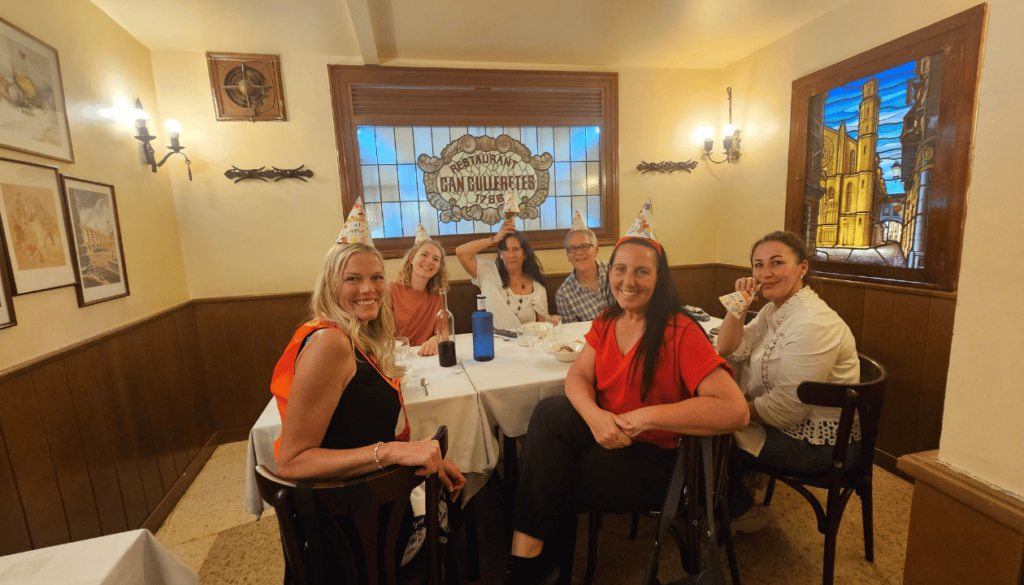
That afternoon, a lively mix of students, teachers, and friends gathered around a long table. The group dynamic made the experience even richer, as everyone learned from each other in a relaxed, social setting. Someone joked it felt like a class reunion, only with better wine. Karen laughed and said it was the best school she had ever joined, because here the homework was tapas and the tests were measured in smiles.
The lunch soon turned into spontaneous speaking practice, ordering food, sharing stories, and repeating playful phrases that only make sense after dessert. In that moment, Karen told me she finally felt she could communicate in real life, not just study in theory.
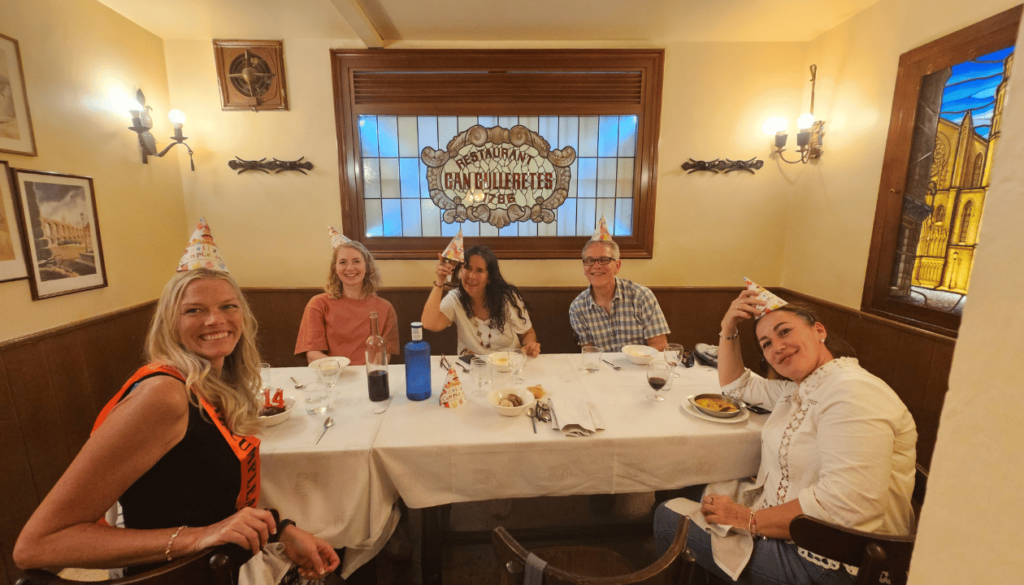
I teased her again: “See? This isn’t about programs or fixed courses. It’s about living the language where it matters most—at the table, with people.” She raised her glass, and for one night, the culture of Spain became her personal university.
How We Worked: Spanish in Daily Life
Karen’s course wasn’t about filling pages with grammar charts. No, no. It was built on action. In the mornings, we kept the sessions short, sometimes in the kitchen, sometimes while walking the dogs. Later, we stepped outside the classroom into the market, where carrots became conjugations and olives turned into oral exams.
Her learning came through role-plays: a clinic intake, a polite phone call, a payment at the pharmacy. In one scenario, Karen practiced using ‘la’ with Spanish body part vocabulary, such as ‘la espalda’ and ‘la pierna’, to describe symptoms during a therapy session. Each scenario gave her vocabulary that felt alive and useful. We balanced note-taking with dialogue practice, so both sides of her brain stayed awake.
Sometimes Karen laughed at my obsession with details. “Monica,” she teased, “you keep focusing on the tiniest prepositions!” And I answered: “Yes, because those details make you sound natural.” We worked with a few resources from my shelves, but mostly the streets and shops of Barcelona became her real library. Writing in Spanish, like drafting patient notes or reports, became an important part of her learning process.
By midweek, her notebook had fewer corrections and more moments of real progress. She wasn’t chasing perfection—she was building confidence. And confidence grew naturally through repetition in everyday settings.
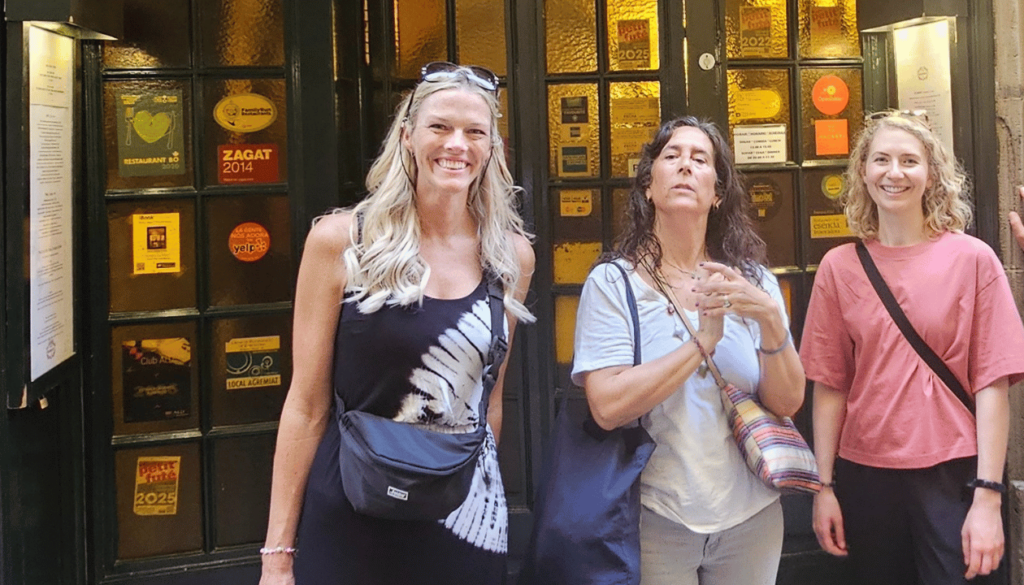
The Professional Layer: Business & Medical Spanish
Karen didn’t come to Spain just to order coffee or chat about the weather. She wanted to grow her professional skills that would let her talk with her patients, write reports, and manage appointments with ease. That meant blending business Spanish with medical Spanish, always tied to real-life contexts. This type of training is especially relevant for businesses in the healthcare sector that need Spanish-speaking staff to better serve their clients and patients.

We role-played therapy sessions where she practiced giving clear words of reassurance. We drafted appointment reminders, simulated phone calls, and even discussed treatment plans, all in Spanish. Each scenario showed her how professionals like her can communicate with both confidence and empathy.
Her schedule looked simple on paper: morning drills, afternoon fieldwork, evening recaps, but each part carried real depth. The skills she learned could be applied in various settings, including the office, making the training flexible and practical for different professional environments. One evening, she told me: “This isn’t just a vacation; this feels like professional training.” I nodded, because for working professionals, learning in context is what makes the language truly stick.
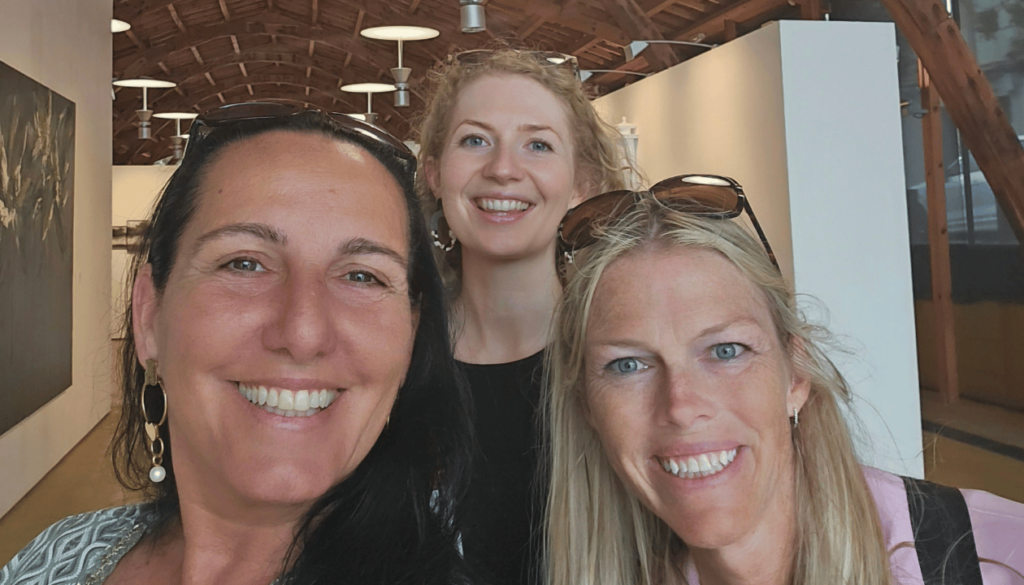
Karen’s goal was never to rush, but to advance step by step. By the end, she proudly received her certificate, not just a piece of paper, but a symbol of her effort, her laughter, and her steady growth.
Faculty and Expertise
Behind every successful Spanish immersion program is a team of dedicated instructors who bring the language to life. Our faculty are more than just teachers—they’re experienced professionals who have spent years helping learners master the Spanish language. Many have taught Spanish language courses at top universities and have a deep understanding of what it takes to help students, from beginners to advanced speakers, reach their goals.
With backgrounds in business Spanish, medical Spanish, and Latin American culture, our instructors know how to tailor lessons to fit your needs—whether you’re a physical therapist aiming to communicate effectively with Spanish-speaking patients, or a professional looking to expand your business vocabulary. Their expertise ensures that every lesson is relevant, practical and engaging. By learning from these passionate educators, students gain not only language skills but also the cultural knowledge needed to thrive in Spanish-speaking communities and professional settings.
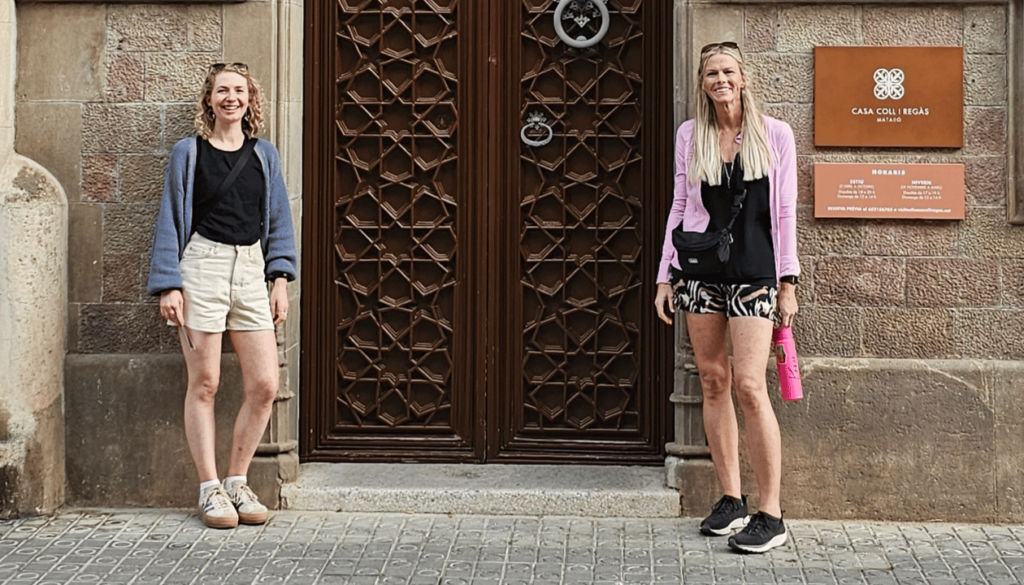
The Role of Spanish in Physical Therapy
For physical therapists, the ability to speak Spanish is more than just a valuable skill—it’s a bridge to better patient care. As the number of Spanish-speaking patients grows, so does the need for clear, compassionate communication. Mastering medical Spanish allows physical therapists to understand their patients’ concerns, explain treatment options in detail, and build trust from the very first appointment.
Spanish immersion programs are designed to help physical therapists gain these essential language skills in a supportive, real-world environment. By practicing with native speakers and learning the specific vocabulary used in clinics and therapy sessions, therapists can advance their ability to provide personalized care. The result? Improved patient satisfaction, stronger therapeutic relationships, and a meaningful impact on the health and well-being of diverse communities. With every new phrase learned, physical therapists gain the confidence and knowledge to make a difference—one patient at a time.
Program Location and Logistics
Spanish immersion programs open the door to learning in some of the most dynamic and inspiring locations around the world. Whether you dream of studying in the heart of Spain or exploring vibrant communities in Latin America, there’s a program to match your goals and schedule. Courses are offered on university campuses, in language schools, and within local communities, giving students the chance to practice their language skills in authentic settings.
With flexible options ranging from intensive week-long classes to semester-long programs, learners can choose the format that best fits their lifestyle. Each program provides access to a wealth of resources, interactive classes, cultural activities, and opportunities to connect with other students and professionals. By immersing yourself in a Spanish-speaking country, you not only learn Spanish but also gain valuable insights into the culture and community. It’s a practical, rewarding way to advance your language skills and achieve your personal and professional ambitions.
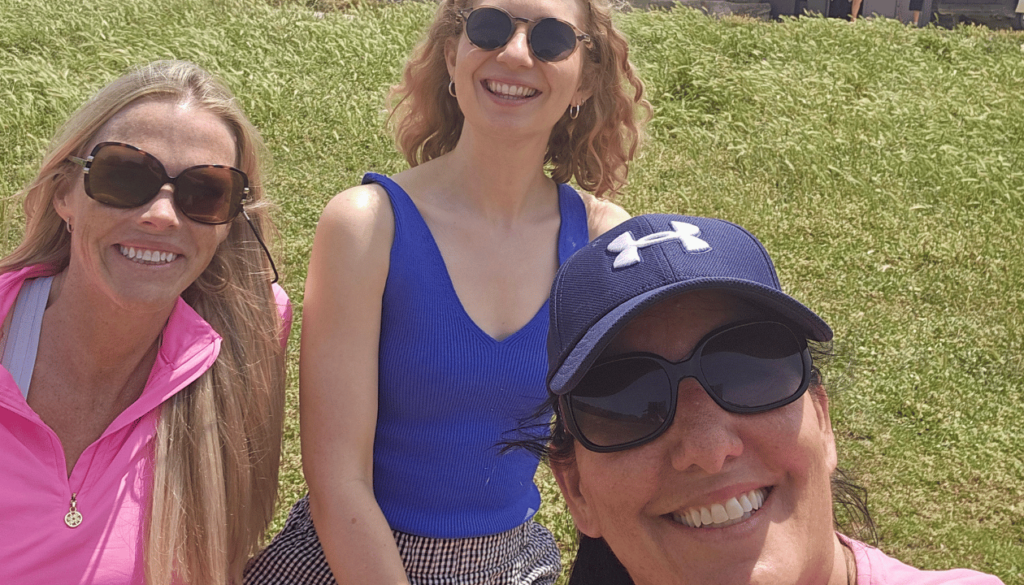
Why It Matters: Karen’s Vision for Latin America
More than once during her stay, Karen told me, “I want to take this learning with me to Latin America.” She imagines working in different clinics, maybe one country for a month, another the next, always ready to adapt. Her dream is to serve both bustling urban centers and small communities, where language is not just about words but about building trust.
For her, learning Spanish in Spain is preparation for the wider world. As she put it: “If I can manage Catalan markets and Barcelona’s fast conversations, I’ll be ready anywhere.” That’s the point of immersion—it doesn’t just train the ear, it prepares the heart.
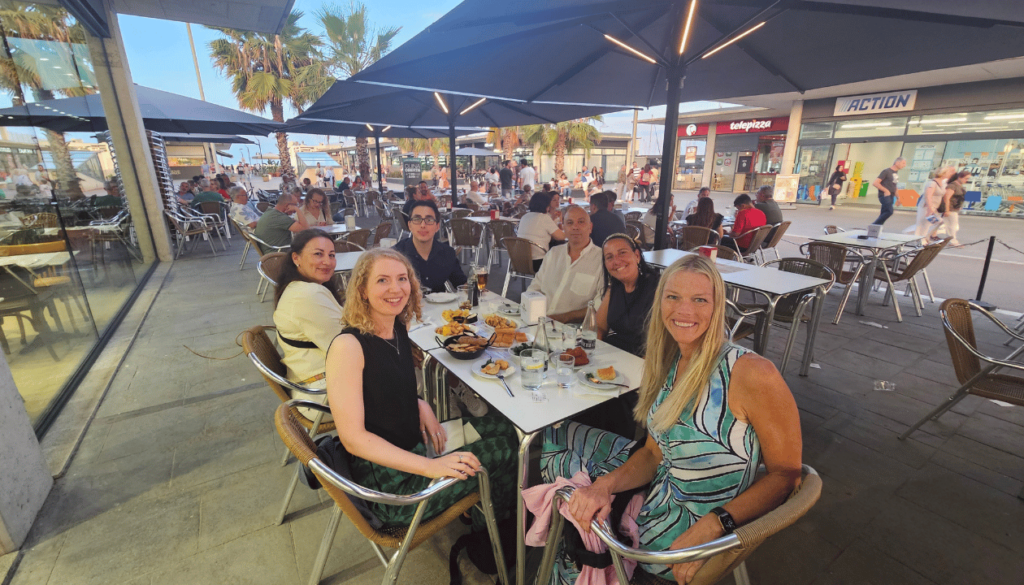
Karen’s vision goes beyond professional growth. She wants to connect with families who bring their loved ones for therapy, to explain each step clearly and kindly. That way, she can gain something deeper than fluency she can build relationships that cross borders.
At the end of the week, she reflected: “I didn’t just learn phrases. I learned patience, rhythm, and how to slow down with people. That’s what I’ll carry into every clinic visit, wherever I go.”
Study Structure & Promises for Students
Karen often laughed and said, “This feels like a little campus, only with dogs and mountain air.” And she was right. Our programs don’t happen in big offices with fluorescent lights—they unfold in kitchens, gardens, and plazas, where the diversity of daily life becomes the real teacher.
Enrollment was straightforward: one form, a confirmed schedule, and then the adventure began. At the end of her stay, Karen received her certificate, a document not only for the wall but also for her professional references.
She left feeling prepared to advance, ready to step into new clinics and collaborate with other professionals with calm and confidence. And that, in the end, is the true gift of these courses: not just learning a language, but learning how to be fully present with a person, in any country, with real communities.
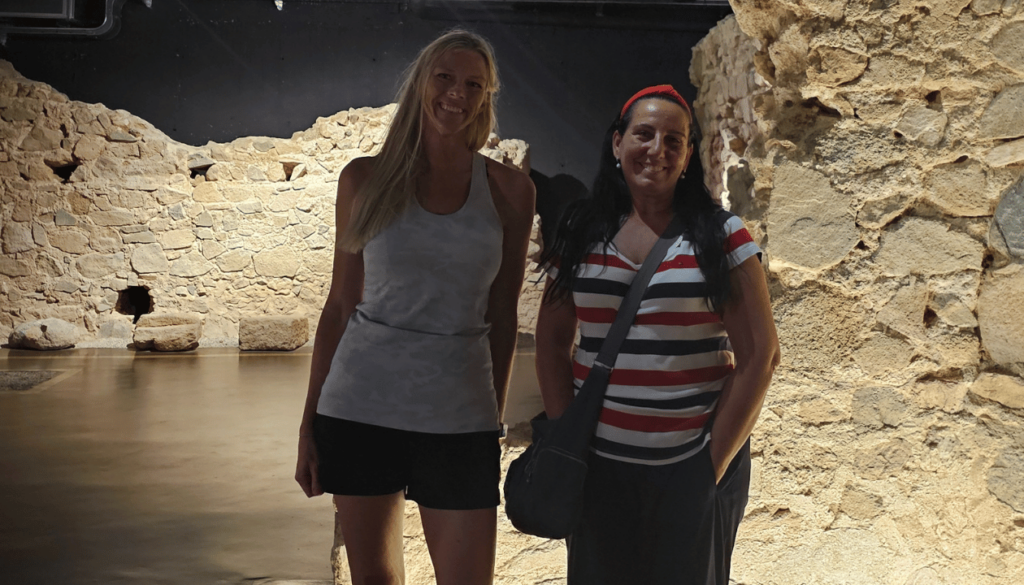
Ready to Start Your Own Journey?
Karen’s story shows how transformative learning Spanish can be for professionals. Whether you’re a physical therapist, a doctor, a teacher, or simply someone eager to grow, Spanish Express has the right program for you.

Our Spanish Homestay Immersion Programs are offered in some of the most inspiring destinations: Barcelona, Burgos, Cádiz, Extremadura, Menorca, Sevilla, and Valencia. Each location combines personalized lessons with real-life practice, giving you the confidence to communicate effectively in any situation.
So, are you ready to take the leap and make Spanish part of your professional and personal life? Explore our destinations, choose the one that inspires you most, and start living the language. Your journey begins here. Request information today and let Spain become your classroom.

